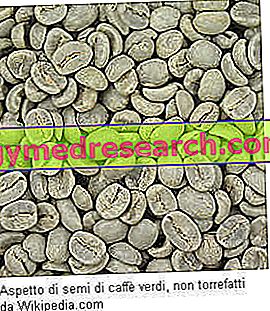What's this
What are lychees?
Litchi, also written lychee in English, liechee, liche, lizhi or li zhi or lichee, is the fruit of the homonymous exotic plant belonging to the Sapindaceae Family - the same as the trees of the flavor - Genus Litchi and specie chinensis .

Natural sources of vitamin C (ascorbic acid), lychee fruits belong to the VII fundamental group of foods. They are also rich in water, have a considerable energy supply from simple sugars (fructose) and have a modest concentration of fiber and potassium.
That of the lychee is a tropical tree originating from the Guangdong and Fujian provinces, in China, where its cultivation is documented since 1059 AD. China is the main producer of lychees, followed by India, other countries in Southeast Asia, Indian subcontinent and South Africa.
The lychee plant is very tall, evergreen. It produces small fleshy fruits, externally lined with a fibrous, rigid, pink-reddish capsule. The pulp, white, translucent, sweet but sour contains a single elongated, smooth, brown-colored seed.
Lychees are used in many sweet recipes. Because the flavor and aroma of these fruits is largely lost in the canning process, the fruit is preferably consumed fresh.
Lychee fruits contain many phytochemicals, beneficial and poisonous. Among the beneficial ones we mention polyphenolic antioxidants. Among the poisonous ones instead, especially in the seeds, methylenciclopropylglycine abounds, an active ingredient with hypoglycemic capacity, presumably responsible for serious side effects such as non-inflammatory encephalopathy found in Indian and Vietnamese children.
Nutritional Properties
Nutritional properties of lychees
As natural sources of vitamin C, soluble sugars, water, fibers and potassium, lychees belong to the VII fundamental group of foods.
They have a caloric intake which, in the context of sweet fruits, can be considered medium-high. Energy is mainly supplied by carbohydrates, followed by irrelevant percentages of proteins and lipids. As we have said, carbohydrates are soluble and more precisely consisting of fructose. The few peptides have a low biological value and the fatty acid composition is in favor of the unsaturated ones.
Lychees are free of cholesterol, gluten, lactose and histamine. Instead they have a good water, fiber and antioxidant content. The purine content should be very low.
A French study (Daily Polyphenol Intake in France from Fruit and Vegetables) has shown that lychees contain more polyphenols than many other fruits such as, for example, apples and grapes. These consist of 87% of flavan-3-ols monomers and dimers (which are reduced with preservation), while cyanidin-3-glucoside represents 92% of total anthocyanins. The lychees also contain oligonol, a short chain polyphenol studied for some hypothetical biological properties.
As far as minerals are concerned, the lychees do not seem to have concentrations worthy of note; the only exception, although not astonishing, is potassium.
Instead they contain significant amounts of water-soluble vitamins, in particular vitamin C. The fresh pulp contains 72 mg of ascorbic acid per 100 grams of edible portion, a quantity that represents 86% of the daily requirement. On average, the consumption of nine litchi can satisfy the daily vitamin C demand of an adult.

Litchi, Raw | |
Nutritional values per 100 g | Quantity' |
| Power | 66.0 kcal |
Total carbohydrates | 16.53 g |
Starch | -g |
| Simple sugars | 15.23 g |
| fibers | 1.3 g |
| Grassi | 0.44 g |
| Saturated | 0.01 g |
| Monounsaturated | 0.12 g |
| polyunsaturated | 0.13 g |
| Cholesterol | 0.0 mg |
| Protein | 0.83 g |
| water | 81.76 g |
| Vitamins | |
| Vitamin A equivalent | 0.0 RAE |
| Beta-Carotene | -μg |
| Lutein Zexanthin | -μg |
| Vitamin A | -iu |
| Thiamine or vit B1 | 0.01 mg |
| Riboflavin or vit B2 | 0.07 mg |
| Niacin or vit PP or vit B3 | 0.6 mg |
| Pantothenic acid or vit B5 | -mg |
| Pyridoxine or vit B6 | 0.10 mg |
| folate | 14, 0μg |
| Vitamin B12 or cobalamin | 0, 0μg |
| Choline | -mg |
| C vitamin | 71.5 mg |
| Vitamin D | -μg |
| Vitamin E | 0.07 mg |
| Vitamin K | 0, 4μg |
| Minerals | |
| Football | 5.0 mg |
| Iron | 0.31 mg |
Magnesium | -mg |
| Manganese | 10.0 mg |
| Phosphorus | 31.0 mg |
| Potassium | 171.0 mg |
| Sodium | 1.0 mg |
| Zinc | 0.07 mg |
| fluoride | -μg |
Diet
Lychees in the diet
Lychees lend themselves to most diets.
They are indicated in the diet against overweight and metabolic pathologies, as long as the portion is adequate. In particular, it may be necessary to reduce the amount and frequency of consumption in the treatment of severe obesity. Given the considerable glycemic load, it is natural to wonder if the consumption of lychees could be suitable for the diet for type 2 diabetes mellitus and hypertriglyceridemia. Actually yes. This is because, as we shall see in the next paragraph, the lychees have a marked hypoglycemic function and therefore, especially on an empty stomach, do not cause hyperglycemia. Note : significant consumption of lychees, especially unripe, should be avoided in case of type 1 diabetes mellitus. Large portions are also not recommended in hypoglycemic drug therapies for type 2 diabetes mellitus.
They have no contraindications in the treatment of arterial hypertension, hypercholesterolemia and hyperuricemia. The same applies to food intolerance to lactose, gluten and histamine.
The abundance of water and the potassium content make lychee foods useful in the sportsman's diet. The fiber content, although not amazing, contributes to the achievement of the quota necessary to maintain intestinal health.
The richness in vitamin C and polyphenols can be very useful to support the defensive action against free radicals. Furthermore, ascorbic acid is a necessary factor for the synthesis of collagen, a protein widespread in the human body, and contributes to supporting the immune system.
Contraindications
Do lychees hurt?
In 1962 it was discovered that litchi seeds contain a venomous principle called methylenciclopropylglycine (MCPG), a homologue of hypoglycine A, which has a hypoglycemic effect. This unwanted molecule is very abundant in seeds but is present, albeit to a lesser extent, even in the pulp (especially unripe).
From the late 1990s, during the lychee harvest season (May to June), several outbreaks of non-inflammatory encephalopathy (Ac Mong's encephalitis - from the Vietnamese word "nightmare") have occurred in northern Indian and Vietnamese populations . An Indian survey conducted in 2013 by the Centers for Disease Control and Prevention (CDC) showed that these cases, characterized by almost identical symptoms to Jamaican vomiting sickness (Jamaican vomiting sickness), were related to the consumption of lychees. Ac Mong's encephalitis, more common in malnourished children who ate lychees on an empty stomach, fatal in 44% of cases, was therefore triggered by hypoglycemia (blood sugar less than 70 mg / dl) caused by hypoglycine A (abundant in fruits unripe). Other assessments have revealed that lychees contain "unusual amino acids" that can affect gluconeogenesis and β-oxidation of fatty acids, contributing to the onset of acute disease.
| Litchi fruit contains methylene cyclopropyl-glycine | |
Portion of fruit analyzed | Content of MCPG |
Lychee seeds | 1.80 g / g dry weight |
Immature pulp of lychees | 0.57 g / g fresh weight |
Ripe lychee pulp | 0.18 g / g fresh weight |
The CDC report recommends that parents ensure that children limit their total consumption of lychees and that they take them only after meals, to increase blood glucose levels.
Previous studies had erroneously concluded that by handling litchi contaminated with saliva, urine or bat guano, or other vectors (eg insects), the infection with Chandipura virus (CHPV - member of the Rhabdoviridae family, associated with onset of an encephalitic disease in humans).
A 2017 study found that pesticides used in plantations could be responsible for the death of children in Bangladesh.
Purchase
Tips for buying lychees
Lychees are commonly sold fresh in Asian markets and, in recent years, even in supermarkets around the world. The red rind (peel) becomes dark brown with refrigeration, but the taste is not affected.
Lychees are also sold in boxes all year round. The fruit can also be dried with the peel, a process that makes it dark and wrinkled. Due to its characteristic appearance, dried lychees are also improperly called "lychee nuts".
Cultivation
Litchi cultivation
Lychees are grown extensively in China, India, Thailand, Vietnam and the rest of south-east tropical Asia, the Indian subcontinent and, more recently, South Africa, Brazil, the Caribbean, Australia and the United States.
The lychee plant requires a tropical climate with temperatures no lower than -4 ° C. Growth is optimal on well-drained, slightly acid soils, rich in organic substance.
A wide range of cultivars is available, with early and late ripening types, suitable respectively for warmer and cooler climates.



